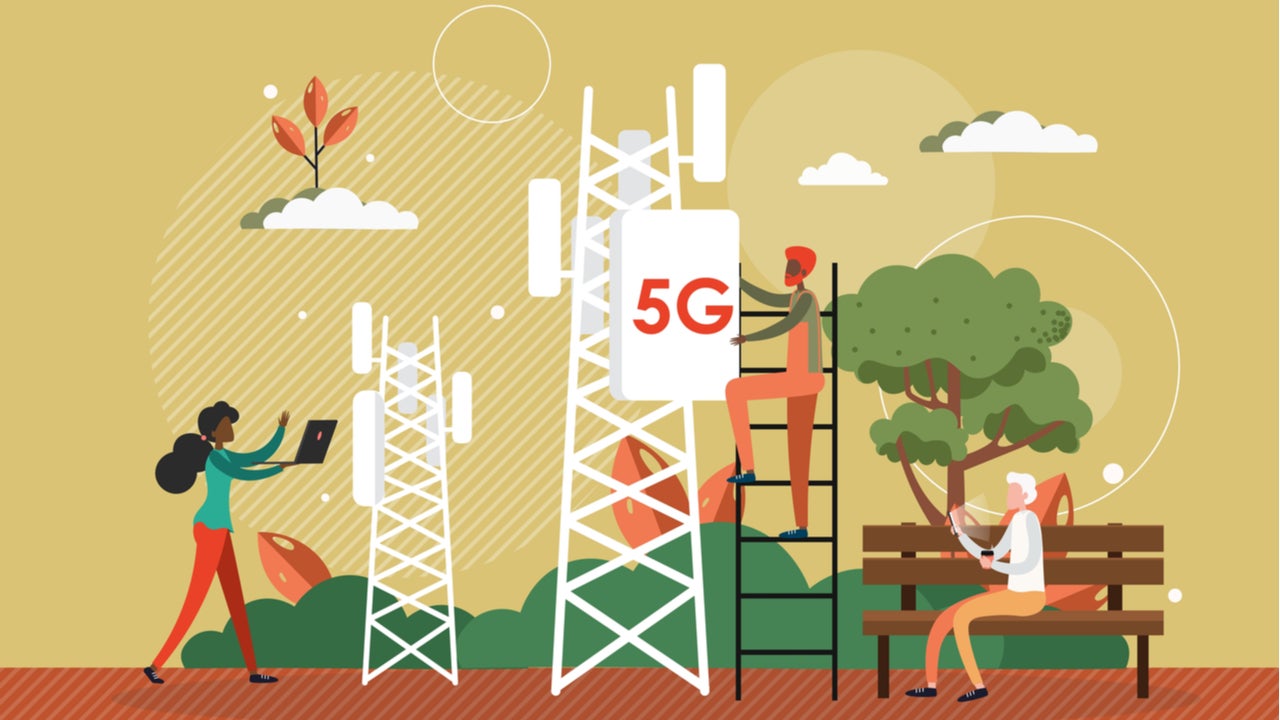Mobile operators with substantial mid-band spectrum and deployed massive MIMO (M-MIMO) technology can deliver faster speeds and achieve service differentiation.
The deployment of 5G is well underway and people around the world are having a taste of the next-gen experience. GlobalData forecasts 5G subscriptions will reach 861 million by end of the year, doubling the figure in 2020. The availability of 5G is also rising in major cities, based on a study conducted by Ookla (Global 5G Benchmark Report Q1 – Q2 2021). The study defines availability as the percent of users on 5G-capable devices that spend the majority of their time on 5G, both roaming and on-network.
Besides coverage, the availability of 5G-capable phones is a key factor in driving adoption. According to GSA, there were over 600 commercially available 5G devices in August 2021, which included mobile phones from major brands such as Apple, Samsung, Huawei, Google and Xiaomi. While the initial focus was in launching 5G commercial services, the race now is about increasing availability and speeds.
Key metrics
Speeds (download and upload) are also key metrics assessed in the Ookla study. In this regard, Seoul tops the chart with median download speed of 468Mbps and median upload speed of 50 Mbps. Interestingly, the rest of the top five cities are all in the Middle East – Abu Dhabi, Dubai, Doha and Riyadh; with download speeds ranging from 385 Mbps to 412 Mbps, and upload speeds ranging from 31 Mbps to 39 Mbps. In Asia, Beijing (8th) and Bangkok (10th) are also among the top ten in the speed benchmarking exercise.
These speeds are now faster than the global average mobile and fixed broadband according to Ookla’s Speedtest Global Index – Mobile (55Mbps/12Mbps) and Fixed (108Mbps/58Mbps) in July 2021. With a significantly faster 5G speed compared to 4G/LTE and fixed broadband, the latest mobile technology can start to make an impact on mobile operators and end-users including consumers and businesses.
5G can deliver better user experiences
At speeds multiple times faster than 4G/LTE, 5G can deliver better user experiences, especially for bandwidth hungry apps. Together with its low-latency characteristics, 5G can support new applications such as AR/VR to enable new B2B/B2C use cases, fixed wireless access as an alternative to wired broadband, and cloud gaming for differentiated experiences. This, in turn, can help operators to deliver better services and create new revenue streams, while improving cost structure for supporting higher data usage.

US Tariffs are shifting - will you react or anticipate?
Don’t let policy changes catch you off guard. Stay proactive with real-time data and expert analysis.
By GlobalDataMigrating customers to 5G will also allow operators to re-farm spectrum and shutdown legacy systems. This means greater efficiency with their spectrum assets, and remove the cost of maintaining legacy systems.
Spectrum availability
While there are multiple factors that can affect the speed and performance of 5G, one key factor is the amount of spectrum available. In general, the amount of mid-band spectrum, notably 3.5GHz and 2.6GHz, can make a major difference in driving both availability and speeds (the sub 1GHz band is good for coverage but offers limited bandwidth while mmWave offers more bandwidth but limited coverage).
The leading operators in the Ookla study have sizeable mid-band spectrum for 5G. For example, Zain in Saudi Arabia (Zain KSA) has reportedly achieved faster 5G than competitors through a combination of spectrum in the 3.5GHz and 2.6GHz bands – it has 90MHz in 2.6GHz band and 100MHz of 3.5GHz spectrum. While Thailand is not often associated with high-speed mobile broadband, it has performed well in the Ookla assessment. The leading operator in Thailand – AIS – has also used 100MHz of 2.6GHz spectrum for 5G and will likely have more capacity when the regulator releases the 3.5GHz spectrum.
M-MIMO gives 5G a speed boost
Another key technology that is giving 5G a speed boost is M-MIMO (multiple-input and multiple-output) antenna technology. It allows for the transmitting and receiving of more than one data signal simultaneously over the same radio channel. This means an ability to multiply the capacity of antenna links.
While standard MIMO networks use a relatively small number of antennas (typically between two and eight), massive MIMO uses large antenna arrays of 16 transceivers and receivers or higher and is, therefore, an important part of keeping up with 5G capacity requirements and making more efficient use of spectrum.
M-MIMO and 5G market share
It is noted that both Zain KSA and AIS have used massive MIMO extensively in their 5G deployments. Through achieving faster 5G speeds than competition, Zain KSA claims it has been able to achieve higher 5G market share than its rivals even though it has the smallest overall market share; and it will allow AIS to maintain its leadership position in Thailand.









